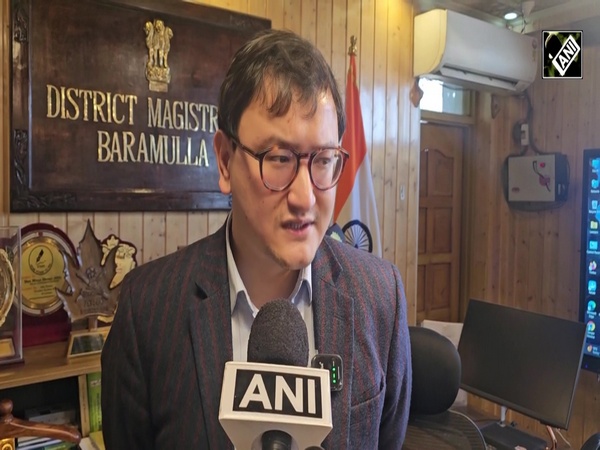Parvinder Singh Gahlaut of Indian Potash Limited discusses the Role of DAP in Sustainable Agriculture Practices
Apr 10, 2025

VMPL
New Delhi [India], April 10: Soil is the root of agricultural success, providing essential nutrients and a stable foundation for plant growth while supporting ecological balance. Fertilizers plays a vital role in supplement the nutrients to crop plants vis enhancing soil fertility, ensuring it can sustain crop production and maintain its soil health over time.
However, the effectiveness of fertilization depends on selecting the right mix of nutrients, tailored to the specific needs of the soil and crops. A balanced fertilization approach not only boosts productivity but also preserves soil structure.
To delve deeper into this critical topic, let's explore the principles of balanced fertilization with Parvinder Singh Gahlaut of Indian Potash Limited, whose expertise sheds light on optimizing soil health through scientifically informed balanced fertilizer practices.
What is balanced fertilization?
It involves supplying all essential plant nutrients such as primary nutrients like nitrogen (N), phosphorus (P) and potassium (K) along with secondary nutrients such as calcium (Ca), magnesium (Mg) and sulphur (S) as well as micronutrients like zinc (Zn), iron (Fe), Copper (Cu), Manganese (Mn), Boron (B) etc. in right proportion, right time at right place by right method to ensure optimum crop growth and production.
This approach is guided by factors such as soil type, crop requirements and growth stages, ensuring that nutrient deficiencies or excesses are avoided. Balanced fertilization not only enhances crop productivity and quality but also promotes long-term soil fertility, reduces environmental risks like nutrient runoff, and improves cost efficiency by minimizing wasteful fertilizer use.
Stating the importance of balanced fertilization Parvinder Singh Gahlaut also known as PS Gahlaut says, "Balanced fertilization is essential for maintaining soil health, as it ensures crops receive the right mix of nutrients needed for optimal growth. This approach prevents nutrient imbalances that can degrade soil quality. By replenishing the soil with a diverse range of nutrients, balanced fertilization fosters microbial activity, boosts organic matter, and improves soil structure, making it more resilient to erosion and environmental stress.
Balanced use of DAP - a key to healthy crops
Diammonium Phosphate (DAP) is one of the most widely used fertilizers globally, valued for its high nutrient content and versatility. It contains 18% nitrogen (N) and 46% phosphorus (P2O5), making it a rich source of these two primary nutrients essential for plant growth & development.
DAP is highly water-soluble, allowing it to dissolve quickly in soil and release ammonium and phosphate ions, which are readily absorbed by plants.
Nitrogen supports vegetative growth and chlorophyll production, while phosphorus is crucial for root development, energy transfer, and flowering. Its granular form ensures ease of application, making it suitable for a variety of crops and soil types.
Parvinder Singh Gahlaut states, "While DAP is highly effective, its balanced use is critical to avoid adverse effects on soil health and crop productivity. Overuse of DAP can lead to phosphorus buildup in the soil, which may lock in other nutrients like zinc or iron, reducing their availability to plants."
This imbalance can harm microbial activity and soil structure over time. The balanced application involves determining the soil's nutrient needs through testing and using DAP in combination with other fertilizers, such as urea, to provide nitrogen in later stages of crop growth.
He adds "We at Indian Potash Limited understand the critical importance of educating farmers about the balanced use of fertilizers. Through initiatives like our extensive IPL rural network, 'Potash for Life' program & PN-PRANAM. We remain steadfast in our commitment to promoting balanced fertilization. These efforts reflect our dedication to empowering farmers with knowledge and ensuring sustainable agricultural practices that enhance both crop productivity and soil health."
By applying DAP in appropriate amounts and at the right time, such as during the basal dose ensures efficient nutrient uptake by crops. For instance, placing DAP slightly below and to the side of seeds allows roots to access phosphorus easily without causing seedling injury due to ammonia release. This balanced approach improves crop yields, enhances root systems, and maintains long-term soil fertility by preventing nutrient deficiencies or toxicities.
By adopting balanced fertilization practices--guided by soil testing and crop-specific needs--farmers can optimize nutrient uptake, enhance yields, and maintain soil health without risking long-term degradation.
However, Parvinder Singh Gahlaut believes, achieving this balance requires proactive efforts from the fertilizer industry to educate farmers on the risks of overuse and the benefits of precise application. If farmers are equipped with the right knowledge and tools, DAP and other fertilizers can be used effectively without any adverse consequences, paving the way for sustainable agriculture and environmental stewardship.
(ADVERTORIAL DISCLAIMER: The above press release has been provided by VMPL. ANI will not be responsible in any way for the content of the same)


















